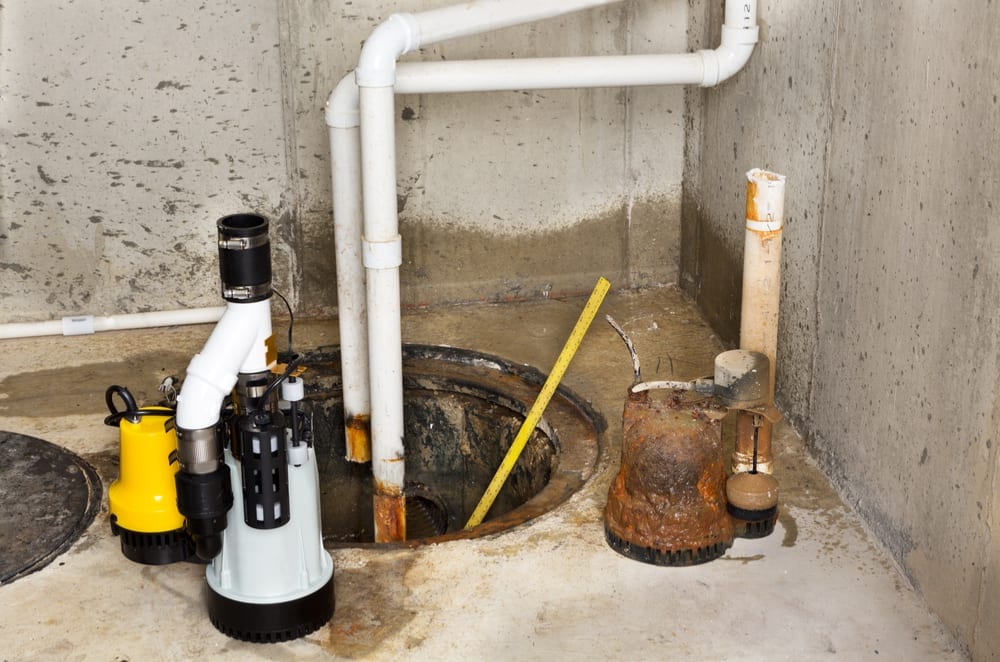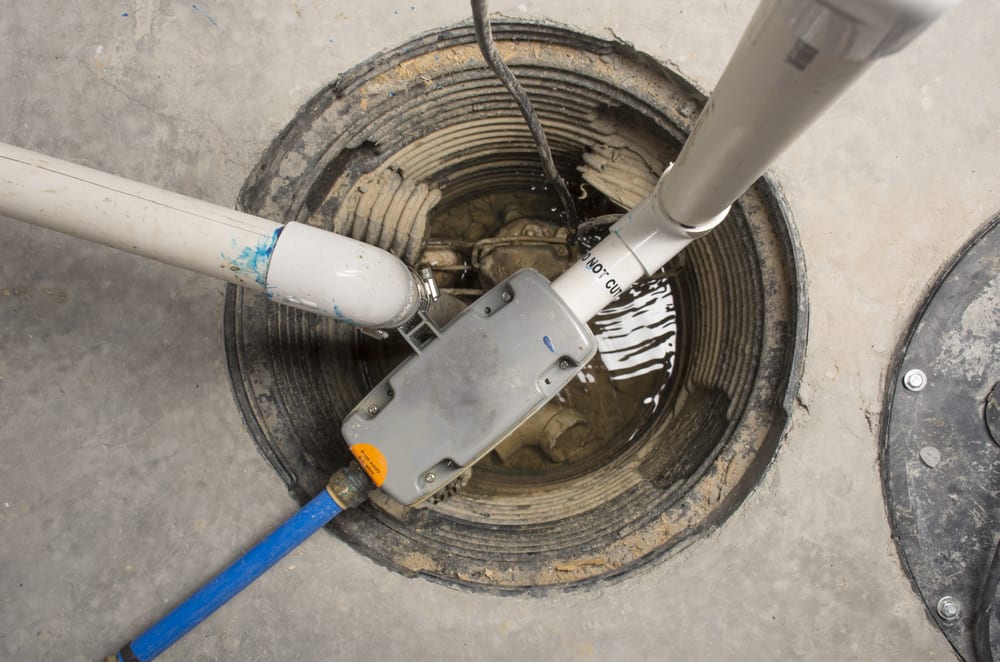For many homeowners, a sump pump is an added layer of protection against a flooded basement or crawlspace. Unfortunately, a sump pump failure can result in extensive flooding or damage. We look at what causes a sump to fail as well as how to prevent a sump pump failure.
9 Causes of a Sump Pump Failure
1. Power Outage
A power outage is the most common reason a sump pump fails. Severe storms not only bring heavy rains, but also high winds and lightning strikes. Unless you have a sump pump backup system, a power outage can easily lead to flooding.
2. Switch Problems
After power outages, a switch problem is the next major reason a sump pump fails. This is most common in pumps with float switches. As the pump runs, it can move across the floor of the basin. This presses the float switch into the basin wall and prevents it from working properly. In pumps with pressure switches, dirt can clog the switch and keep the pump from running.
3. Overworked Pump
Most sump pumps are meant to run for less than a minute at a time. If there is a problem with the switch or there is a lot of water, your pump may run longer or more often. Not only does this wear out the pump faster, but it also generates more heat. The added heat can weaken parts within the pump and increase the chance it breaks.
4. Clogged Pump
The drains that fill the sump pump basin may have a small amount of dirt. Over time, the dirt can build up and clog the pump inlet. If the inlet is clogged, the pump will turn on but not remove the water.
5. Clogged or Frozen Discharge Pipe
Although less common than a clogged pump, the discharge pipe can also get clogged. The clog is normally caused by dirt in the discharge water, but it may come back in through the discharge pipe itself. Although sump pumps aren’t usually needed during cold weather, ice can block the drainage line. This will overwork the pump and cause it to burn out.
6. Improper Maintenance
Understandably, most of us don’t want to clean our sump pumps. They are dirty and may have a musty odor. However, if you don’t clean your sump pump regularly, you are likely to wear it out faster. Review our sump pump maintenance checklist on how to clean it and keep it running longer.
7. Old Age
Your sump pump should last anywhere from 6 to 12 or more years depending on how much it runs and how often you clean it. PVC discharge pipes will last 25 to 40 years, while cast iron pipes will last at least 80 years. If you are uncertain about the age of your pump or pipes, have the system inspected by a professional.
8. Improper Installation
Although all sump pumps come with installation instructions for that specific unit, not everyone follows them. Installing your system incorrectly will shorten the life of the pump. Some of the most common mistakes are securing the pump to the basin floor, not using a backflow valve, or placing gravel, sand, or other materials at the bottom of the basin.
9. Defective Product
In very rare cases, your sump pump could have a defect. Some defective units may not work out of the box, while others will last only a few months to a year before breaking.

Tips to Keep Your Sump Pump Running Longer:
Here are a few tips to keep your sump pump working properly:
- Install a battery backup in case of a power outage
- Test your sump pump once a month by pouring in a bucket of water
- Clean your sump pump every few months to prevent clogs and damage
- Install a solid cover to keep out dirt that could clog the pump
- Replace your sump pump every 6 to 12 years depending on how often it runs
How Do You Reset a Sump Pump?
From time to time, you may need to reset your pump.
- Some pumps may have a reset switch. If your pump does, make sure you hold it down for a few seconds first. If not, trip the GCFI switch or turn the breaker off and then back on.
- Then turn off and unplug the pump. Wait at least a minute before moving on to the next step.
- Next, disconnect the pump from the discharge pipe and look inside for a clog. Remove any dirt, rocks or debris you see inside the pump.
- Then reconnect the pump to the discharge pipe and plug it back in. Pour in a bucket of water to test that the pump is working properly.
- If your sump pump still isn’t running normally, check your electrical breaker box or call a specialist to inspect the problem.
Does Homeowners Insurance Cover a Sump Pump Failure?
Unfortunately, most homeowners insurance does not cover water damage caused by a sump pump failure. In the rare case they do cover the damage, they normally will not pay for a replacement sump pump. Contact your insurance agent to see what your policy covers. In some cases, they may even offer sump pump or flood insurance.
If you have water damage after a sump pump failure, Restoration Local is here to clean it up. Our restoration experts offer 24-hour service and 30 minute response time to limit the damage and restore your home fast. Call 1-888-443-3110 now for a free estimate and immediate water damage cleanup services.





